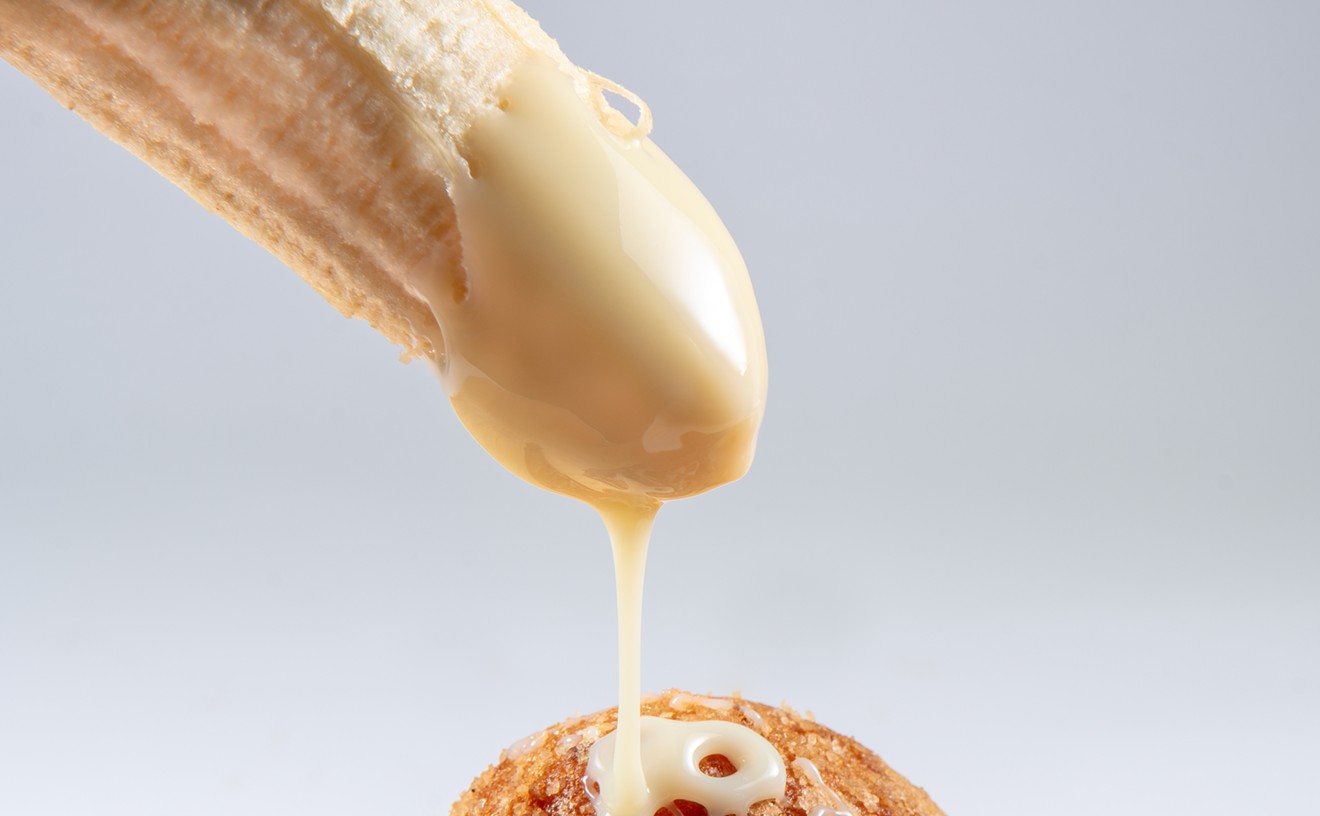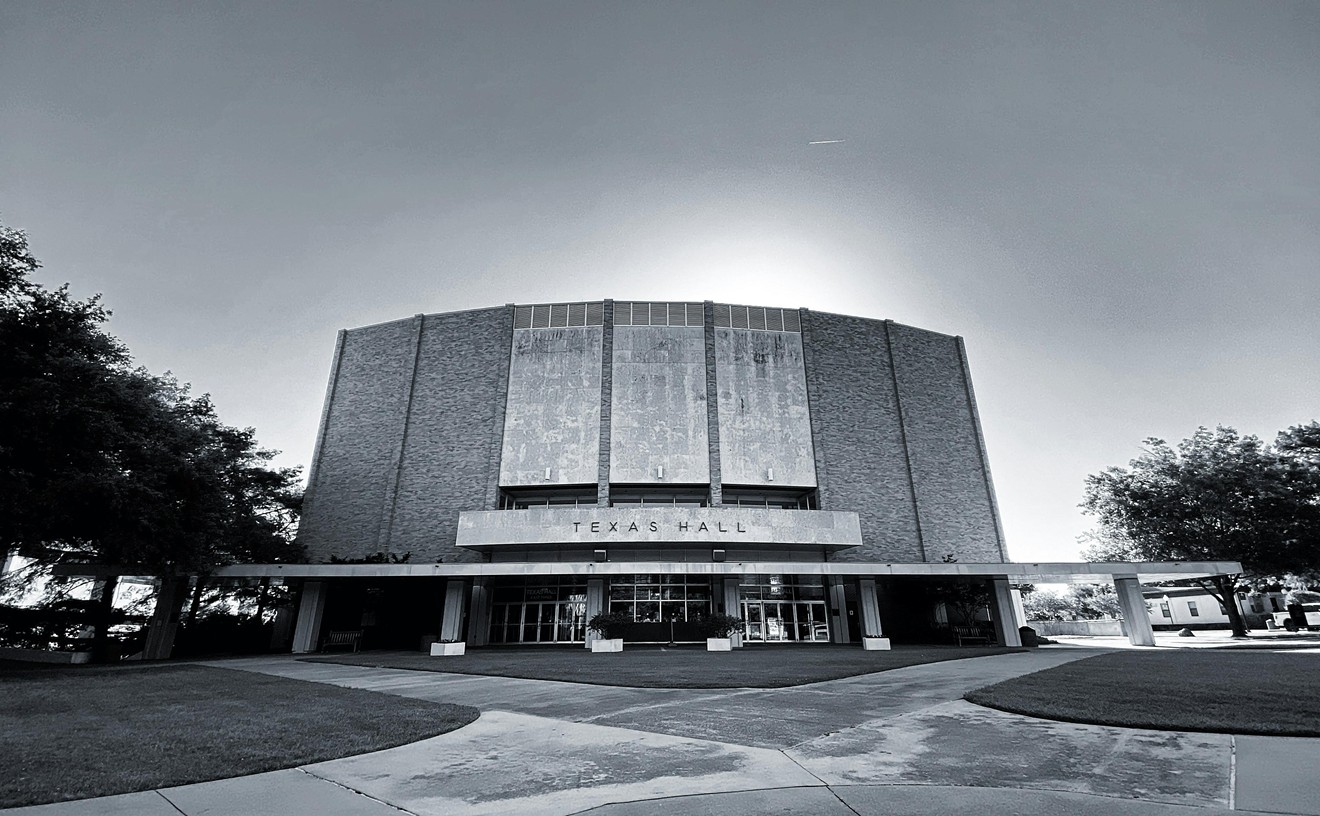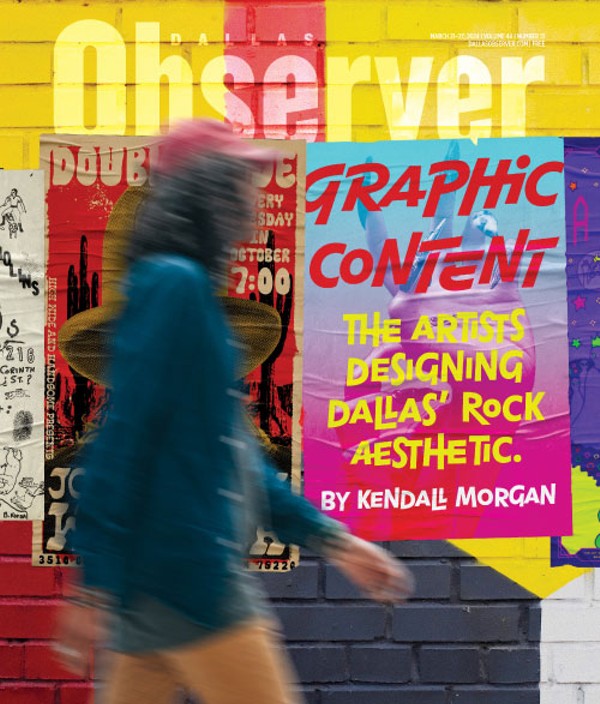What's in your drugs? Well, not your drugs, obviously, or ours, because we're law-abiding, tax-paying, speed-limit-driving good citizens, one and all. But as anyone who may have a purely academic interest in this sort of thing might like to know, street drugs are often very, very impure (shocker), and perhaps none more so than Ecstasy, according to a drug chemist we interviewed recently.
But why would we ask about Ecstasy in the first place? After all, according to the Texas Department of State Health Services' ludicrously out-of-date statistics, in 2006 about 25 percent of people who were admitted to state-funded treatment programs were there for alcohol addiction. Crack and amphetamines were the second and third most common drugs, but they lagged way, way behind. And only 41 people were admitted for hallucinogens, though it's also possible DSHS classed Ecstasy under "other drugs," which still accounted for just 360 of the roughly 55,000 admissions that year.
We got curious about Ecstasy, though, following a hearing earlier this year in which the city's Permit and License Appeal Board voted to shut down rave club Afterlife. In an often bizarre daylong hearing, officers from the Dallas Police Department's narcotics unit, wearing hoods to conceal their identities, testified that the club was, in the words of one officer, "an open-air, free-for-all drug-trading den."
"We were only there for three nights and observed numerous people consuming a drug I believe to be MDMA, [Ecstasy]" the officer said. "They were observed to be very euphoric and showed extreme perspiring." He described the scene as best he could: "Kids will do this little hand dance and all sorts of crazy motions," he said. "They were tranced out of their minds, with pupils as big as your thumbnail."
Club owner Mark Annis flatly denied allegations that he'd knowingly allowed drugs to be sold at the club. His attorney pointed out that he'd operated without incident, and with a dance hall license from the city, for six years. But the board still voted to uphold the license revocation initially issued by DPD, and Afterlife closed its doors almost immediately.
During the officers' testimony, some odd tidbits emerged: They went into the club with the intention of buying Ecstasy, which they said they did very easily, but when the drugs were analyzed in the lab, some of them weren't Ecstasy at all. They were so adulterated, the officers testified, that it was hard at times to tell just what they were. One officer said he'd been sold something that was "marketed as molly," meaning pure MDMA, but that an analysis revealed it wasn't even close. "Somebody in there sold me a substance that I have no idea what it is," he said.
We thought it was unlikely that the lab returned a report reading, "No idea what in the hell this could be," so we set out to find a chemist who could talk to us. And we did find one eventually, although this person spoke to us on the condition of absolute anonymity. There are several labs in the city that analyze drugs for different agencies; the chemist asked us not to identify the lab he or she works for, where it receives drugs from, or even the most basic personal identifying information.
The chemist said that the only thing that's predictable about Ecstasy, really, is how unpredictable it is. The percentage of actual MDMA versus other substances ranges widely from pill to pill. "Everything is sold as ecstasy," the chemist said. "You have no idea what you're putting in your mouth. It's crazy." And especially when compared to meth and cocaine, the chemist said, the purity of ecstasy is very low. "The pills we get are generally 5 to 10 percent pure," the chemist said. "Cocaine, it's pretty common for us to get 80 or 90 percent [purity]." A lot of times, the chemist said, something that's been sold as Ecstasy doesn't contain MDMA at all. "I would say maybe only 25 to 30 percent of what comes as Ecstasy is actually Ecstasy."
Other times, it's mixed with a whole lot of meth. "If I had to give my best estimate it would probably be around 15 to 20 percent" of cases in which Ecstasy pills or tabs contain meth, the chemist said. "It's not too common, but at the same time, it is never surprising or a shock when we get this." It is unlikely, though, that someone will buy a tab or a pill of X and get only meth instead, the chemist added. "When meth is present, the tablets usually contain a mixture of meth and MDMA. I've rarely seen just meth in Ecstasy tablets."
Ecstasy is also sometimes cut with caffeine. When combined with meth, the chemist said, that can create an increased likelihood of users overheating and dying. "Their body temperature gets to be 105, 106 degrees. The drug increases metabolism, body temperature, they're dancing at these raves, they start overheating and they literally die from that."
All that's not to say that meth is overtaking the Ecstasy market, the chemist said. "I definitely don't think there is more meth in X than there used to be. Since I've been here... the type of drugs in Ecstasy has changed, but the fact that Ecstasy contains many more drugs than just MDMA has remained pretty constant. Basically, since I've worked here Ecstasy has always been incredibly unpredictable in content."
It's also common these days to see other designer drugs from Europe and Australia being sold as Ecstasy, the chemist said. "They may not have any MDMA in them at all. Instead, it's some other -- or a mixture of -- a drug or drugs. To my knowledge, all of these other drugs have similar effects to MDMA, which is why they are being used. They could be cheaper, easier to make and in some states legal -- all good reasons to substitute these for MDMA." Don't get too excited, though: Under the Analog Act, Texas drug enthusiasts can still be prosecuted for using something that's not in itself illegal, if it's an analog of a controlled substance.
During the Afterlife hearing, one narcotics officer testified that they targeted the club as part of "an ongoing investigation," saying, "This isn't the only aspect of the rave scene we're involved in." It wasn't clear if the officers believe that Ecstasy use is becoming a bigger problem in Dallas. (DPD and the city attorney's office didn't respond to our requests for comment.) But much of the testimony at the Afterlife hearing did suggest an urgent, growing issue. Empirically, the chemist said, that's really not the case. "From what I've seen, I really don't think Ecstasy use is increasing. It has probably always been around 5 percent of our cases." The X they get ranges from "really amateur-looking pills," crumbly ones with bad logo imprints, to sleek, professional-looking products. But they don't have much idea where the drugs are actually coming from. "It's what we call 'bathtub' chemistry," the chemist said, "So it's pretty easy to make at home."
The chemist added that cocaine users shouldn't necessarily rest secure (not that coked-up people rest much) in the knowledge that their drug is probably 80 or 90 percent pure. When analyzing cocaine, the lab often finds levamisole, a chemical that's been used to treat parasitic worm infestations in both animals and people. According to the National Center for Biotechnology Information, levamisole has been pulled from the U.S. market for use in humans because it can drastically deplete white blood cells. "We find this in a huge percentage of our cocaine cases, maybe about 75 percent," the chemist said. Less commonly, they'll find that cocaine has been cut with lidocaine, an anesthetic with a similar texture to cocaine (the lab doesn't pick up non-controlled adulterants like baby powder, baking soda, sugar or flour).
Meth, de-wormer and anesthetic aren't the greatest things to find on an ingredients list, though we do recognize that most committed doers-of-drugs probably won't be deterred. Nonetheless, for those of you wishing for a safer alternative, we leave you with a bit of advice from one of the narcotics officers at the Afterlife hearing. The officer was quizzed repeatedly by Mark Annis' defense attorney if the club itself was doing anything illegal by providing things like soft, furry couches, flashing lights and bounce houses.
"Simple possession of a bounce house I don't believe is a crime, sir," the officer replied.
There you have it, straight from the law: You don't have to be high to have a good time in a bounce house. Though surely it helps.










